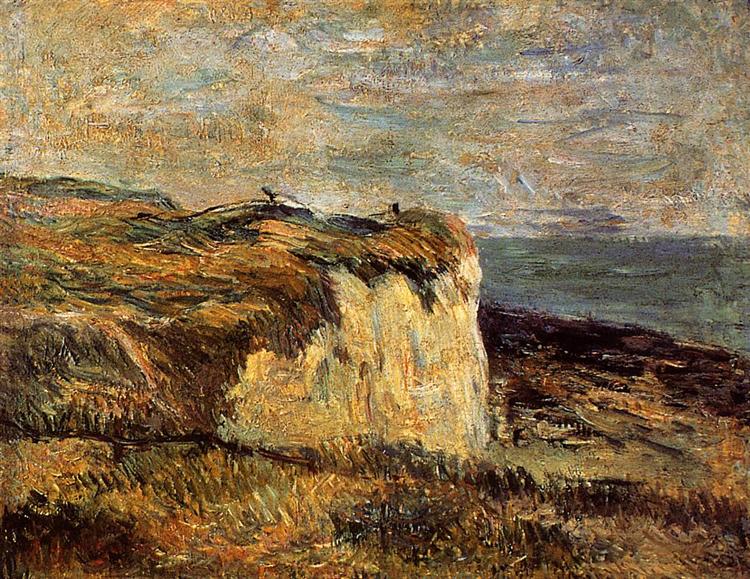Description
The work "Cliff near Dieppe" by Paul Gauguin, painted in 1885, introduces us to a significant moment in the artist's trajectory, who began to explore a more personal and emotional interpretation of the landscape. This piece, which represents a cliff raising a majestically over Dieppe's sea, stands out for its visual arrest and the uniqueness of its palette.
When observing the composition, we find that the cliff is the dominant element, placed on the left margin of the paint, while the ocean occupies the lower part, leading us to imagine a vast horizon. Gauguin uses a compositional structure that invites the gaze to oscillate between the hardness of the cliff of the cliff and the softness of sea water. The cliff lines in a warm terracotta contrast with the bluish and greenish of the sea. This use of color is representative of Gauguin's post -impressionist style, who distanced himself from the strictly naturalistic approach of impressionism to focus on the emotional expression of the landscape.
An interesting aspect of painting is its color treatment. Gauguin moves away from realistic nuances and enters a bolder palette that open new possibilities in artistic expression. The green and blue of the sea, along with the warm tones of the earth, provide a visual wealth that complements the texture of the rocks. This chromatic approach does not have the sole objective of replicating nature, but seeks to evoke deep sensations in the viewer.
It should be noted that in this work Gauguin does not include human figures, which may seem curious, considering its subsequent inclination for the representation of the figure and its humanity. However, the absence of human characters allows the viewer to experience a more intimate connection with the landscape, perhaps suggesting a deeper emotional relationship with nature. Gauguin, although even in his youth as an artist, begins to insinuate his search for a symbolism that would later be clearly manifested in his most iconic works, such as those he would paint in Tahiti.
This work also reflects Gauguin's interest in light and how it impacts the perception of color and shape. Their decisions about the use of light contribute to creating an almost mystical atmosphere, suggesting an ephemeral moment in nature that invites contemplation. The way in which water meets the earth resonates with the idea of the temporality and transience of beauty, elements that will become recurring in its subsequent work.
In "Cliff near Dieppe", Gauguin not only documes a landscape; creates a visual experience that challenges the viewer to consider both the beauty of nature and its own emotional response to it. The work serves as a bridge between its impressionist formation and its future exploration of symbolism and mysticism, marking a milestone in its artistic evolution. Gauguin's ability to merge the physical with the spiritual will lay the foundations for its lasting impact on modern art, and this piece, although often eclipsed by his most recognized works, deserves his place in the history of art for his bold exploration of color, shape and emotion.
KUADROS ©, a famous paint on your wall.
Hand-made oil painting reproductions, with the quality of professional artists and the distinctive seal of KUADROS ©.
Reproduction service paintings With a guarantee of satisfaction. If you are not completely satisfied with the replica of your painting, we refund your money 100%.

